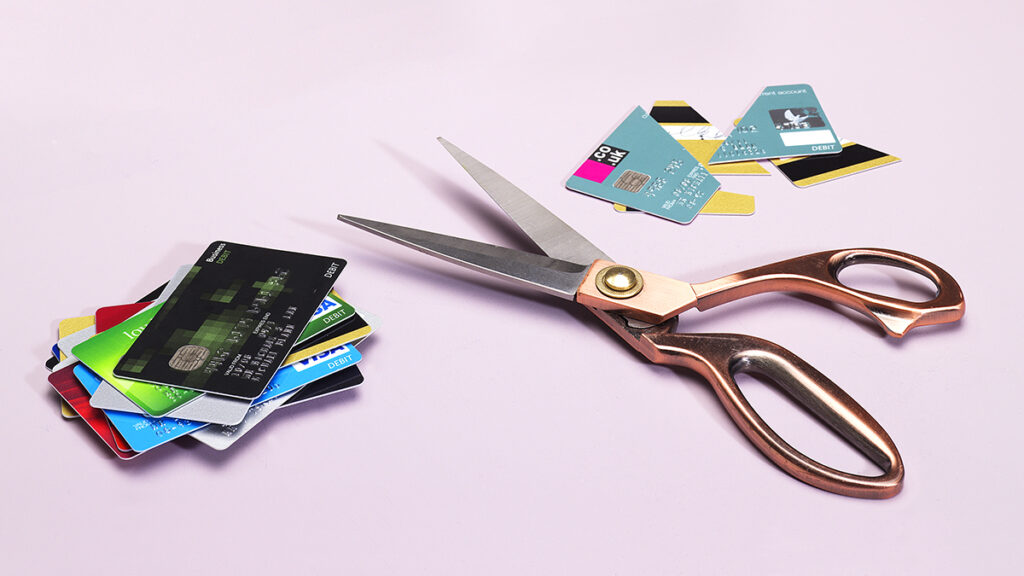Credit cards Traps? Credit card represent one of the most powerful and potentially dangerous financial tools available to consumers today. While they offer unprecedented convenience, valuable rewards, and financial flexibility, they also come with carefully designed mechanisms that can trap unwary users in cycles of debt and financial stress.
Understanding these traps isn’t just about avoiding debt—it’s about protecting your financial future and using credit cards as the tools they’re meant to be, rather than letting them become financial burdens.

The Psychology Behind Credit Card Spending – Credit cards Traps
Why Credit Cards Make Us Spend More
The psychological impact of credit card spending represents one of the most subtle yet powerful traps consumers face. Research consistently shows that people spend significantly more when using credit cards compared to cash, and understanding this phenomenon is crucial for protecting yourself.
The psychological disconnection between spending and payment creates what experts call “transaction decoupling”—the separation between the pleasure of purchasing and the pain of paying.
When you use a credit card, your brain doesn’t register the spending as a loss of resources in the same way it does with cash transactions. This psychological quirk leads to several behavioral patterns:
- Increased willingness to make impulse purchases
- Higher spending on discretionary items
- Less price sensitivity
- Greater likelihood of choosing premium options
- Reduced consideration of total purchase cost
Understanding these psychological mechanisms is the first step in developing strategies to counteract them. Successful credit card users learn to mentally reconnect the spending and payment aspects of transactions, treating credit card purchases with the same psychological weight as cash transactions.
The Minimum Payment Trap – Credit cards Traps
Understanding the Mathematics of Minimum Payments
Perhaps the most insidious of all credit card traps is the minimum payment option. This seemingly helpful feature can lead to years of debt and thousands in unnecessary interest charges. Let’s break down why this trap is so effective and dangerous:
The typical minimum payment represents only 2-3% of your balance, creating the illusion of affordability. However, this small payment often barely covers the monthly interest charges, leading to a situation where your balance decreases very slowly or, in some cases, actually increases over time despite regular payments.
Consider this example:
A $5,000 balance on a card with 18% APR
Minimum payment: 2% or $25, whichever is greater
Initial minimum payment: $100
Time to pay off making only minimum payments: 22 years
Total interest paid: $6,923
This mathematical reality creates a particularly dangerous situation because the minimum payment decreases as your balance decreases, extending the repayment period even further and increasing the total interest paid.
The Promotional Rate Trap
Understanding the Fine Print of Special Offers
Credit card issuers frequently offer attractive promotional rates, such as 0% APR on purchases or balance transfers. While these offers can be valuable tools when used correctly, they often contain hidden pitfalls that can catch even careful consumers off guard.
Key aspects to understand about promotional rates include:
- Retroactive Interest Charges
Many “special financing” offers include a provision for retroactive interest if the balance isn’t paid in full by the end of the promotional period. This means you could suddenly be charged interest on the entire original purchase amount, even if you’ve paid off most of it. - Balance Transfer Fee Implications
While 0% APR balance transfer offers seem attractive, they often come with:
- Transfer fees of 3-5% of the transferred amount
- Restrictions on transfer amounts
- Impact on credit utilization
- Potential effects on reward earning
- Limited transfer windows
- Purchase Rate vs. Transfer Rate Differences
Many consumers don’t realize that different transactions on the same card can have different interest rates. This can lead to unexpected interest charges when:
- Making new purchases during a balance transfer promotion
- Missing payments that void promotional rates
- Reaching promotional period end dates
The Credit Limit Increase Trap – Credit cards Traps
Managing Automatic Credit Line Increases
Credit card companies often automatically increase credit limits for customers who demonstrate responsible payment behavior. While this might seem like a reward, it can lead to:
- Increased Spending Temptation
- Higher limits often lead to higher spending
- Lifestyle inflation becomes easier to justify
- Emergency fund replacement mentality
- Credit Score Implications
- Higher total available credit
- Potential for larger utilization swings
- Impact on future credit applications
- False Sense of Financial Security
- Viewing credit limits as emergency funds
- Overestimating financial stability
- Delayed emergency fund building
The Reward Program Trap – Credit cards Traps
When Rewards Lead to Overspending
Credit card rewards programs are carefully designed to encourage increased spending. Understanding these mechanisms helps avoid falling into spending traps:
- Signup Bonus Requirements
- Minimum spending thresholds
- Limited time windows
- Category restrictions
- Annual fee considerations
- Category Bonus Manipulation
- Rotating categories that encourage additional spending
- Limited time offers creating urgency
- Merchant category classification issues
- Maximum earning caps
- Point Valuation Complexities
- Variable redemption values
- Expiration policies
- Transfer partner changes
- Devaluation risks
Hidden Fee Traps – Credit cards Traps
Understanding the Full Cost of Credit Card Usage
Credit cards come with numerous fees that can catch users off guard:
- Transaction-Based Fees
- Foreign transaction fees (typically 3%)
- Cash advance fees
- Balance transfer fees
- Convenience check fees
- Penalty Fees
- Late payment fees
- Returned payment fees
- Over-limit fees
- Card replacement fees
- Account-Based Fees
- Annual fees
- Additional card fees
- Inactivity fees
- Account maintenance fees
The Credit Score Impact Trap – Credit cards Traps
Protecting Your Credit History
Credit card usage can significantly impact your credit score in ways many consumers don’t fully understand:
- Utilization Ratio Issues
- Reporting timing effects
- Multiple card balances
- Credit limit decreases
- Statement date vs. due date
- Payment History Complexities
- Grace period implications
- Payment posting delays
- Minimum payment effects
- Late payment reporting
Advanced Protection Strategies – Credit cards Traps
Building a Defensive Credit Card Strategy – Credit cards Traps
Protecting yourself from credit card traps requires a comprehensive approach:
- Systematic Payment Procedures
- Automatic payment setup
- Payment amount strategies
- Payment timing optimization
- Multiple card management
- Monitoring Systems
- Regular statement review
- Credit report monitoring
- Utilization tracking
- Fee assessment
- Emergency Planning
- Backup payment methods
- Credit limit management
- Interest rate monitoring
- Hardship program awareness
Conclusion: Maintaining Long-Term Financial Health – Credit cards Traps
Successfully avoiding credit card traps requires constant vigilance and a thorough understanding of how these financial instruments work. By staying informed about common pitfalls and implementing robust protection strategies, you can enjoy the benefits of credit cards while minimizing their risks.
Key Takeaway Points:
- Always read the fine print carefully
- Never rely on minimum payments
- Understand the true cost of promotional offers
- Monitor all fees and charges
- Maintain emergency funds separate from credit
- Use rewards programs strategically
- Keep utilization low
- Monitor your credit regularly
Remember that credit cards are financial tools, not additional income. By maintaining this perspective and implementing the strategies outlined in this guide, you can effectively avoid common credit card traps while building a strong financial future



